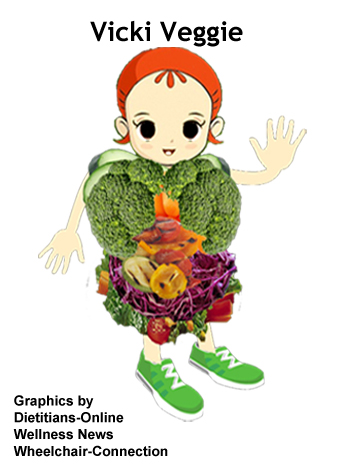April is Fresh Florida Tomato Month and
Tomatoes are Low in Calories and rich in Vitamin C.
They are fun and easy to grow, indoors or outdoors.
Nutrition Facts
Included:
*Nutrition Facts
*Florida Tomatoes
*10 Health Benefits of Tomatoes
*Corinne Dobbas, R.D. from Tomato Wellness
*John Denver singing "Homegrown Tomatoes" with suggestions on how to use them in your favorite recipes.
*Recipes by John Tanasychuk, Food Editor, Sun-Sentinel @FloridaEats, SUP: Florida Eats
*Resources
*Recipes by John Tanasychuk, Food Editor, Sun-Sentinel @FloridaEats, SUP: Florida Eats
*Resources
Nutrition Facts
Florida Tomatoes - So Delicious
Ten Health Benefits of Tomatoes
1. Tomatoes are the most concentrated food source of lycopene. Lycopene is an antioxidant that may play a role in the prevention and treatment of some cancers, such as colon, prostrate, breast, lung and pancreatic cancers.
2. Tomatoes are low in calories. One medium-sized tomato (about five ounces) has 25 calories, a great snack to include on a weight control program.
3. Tomatoes are high in Vitamin C. One-cup tomato provides about 78 percent of the daily value (DV)1. Consuming foods rich in vitamin C helps the body resist infection and aides in wound healing.
4. Tomatoes are a good source of fiber. One cup of diced tomatoes provides 7.9 percent of the DV for fiber. Studies show fiber may lower high blood cholesterol levels, aid in maintaining stable blood sugar levels and help an individual feel full longer.
5. One cup of tomatoes contains 22.4 percent of the DV for vitamin A. Vitamin A plays an important role in vision and night blindness.
6. Tomatoes are a good source of potassium (11.4% DV per one cup). Research indicates diets high in potassium can reduce the risk of heart disease and hypertension.
7. Tomatoes enhance the flavor and color of meals making food more appealing.
8. Tomatoes contain chromium; a mineral associated with helping people with diabetes control their blood sugar levels.
9. Vitamin B2, also known as riboflavin is found in tomatoes. One cup of tomatoes provides 5.1 percent of the DV for riboflavin. Studies on riboflavin show they may prevent migraines.
10. Tomatoes are a source of folate (6.8% DV per one cup). Folate has been shown to reduce the risk of stroke, heart disease and neurological defects in the fetus.
1 The Daily Value (DV) of foods comes from the Reference Daily Intake or Recommended Daily Intake (RDI). DV provides a frame of reference to evaluate the nutrients consumed.
1. Tomatoes are the most concentrated food source of lycopene. Lycopene is an antioxidant that may play a role in the prevention and treatment of some cancers, such as colon, prostrate, breast, lung and pancreatic cancers.
2. Tomatoes are low in calories. One medium-sized tomato (about five ounces) has 25 calories, a great snack to include on a weight control program.
3. Tomatoes are high in Vitamin C. One-cup tomato provides about 78 percent of the daily value (DV)1. Consuming foods rich in vitamin C helps the body resist infection and aides in wound healing.
4. Tomatoes are a good source of fiber. One cup of diced tomatoes provides 7.9 percent of the DV for fiber. Studies show fiber may lower high blood cholesterol levels, aid in maintaining stable blood sugar levels and help an individual feel full longer.
5. One cup of tomatoes contains 22.4 percent of the DV for vitamin A. Vitamin A plays an important role in vision and night blindness.
6. Tomatoes are a good source of potassium (11.4% DV per one cup). Research indicates diets high in potassium can reduce the risk of heart disease and hypertension.
7. Tomatoes enhance the flavor and color of meals making food more appealing.
8. Tomatoes contain chromium; a mineral associated with helping people with diabetes control their blood sugar levels.
9. Vitamin B2, also known as riboflavin is found in tomatoes. One cup of tomatoes provides 5.1 percent of the DV for riboflavin. Studies on riboflavin show they may prevent migraines.
10. Tomatoes are a source of folate (6.8% DV per one cup). Folate has been shown to reduce the risk of stroke, heart disease and neurological defects in the fetus.
1 The Daily Value (DV) of foods comes from the Reference Daily Intake or Recommended Daily Intake (RDI). DV provides a frame of reference to evaluate the nutrients consumed.
Tomato Wellness – Big Red Surprise
Corinne Dobbas, R.D. gives some insight into the difference between fresh tomatoes, and tomatoes packaged as canned, paste, salsa, ketchup, marinara, etc.
Growing Tomatoes
Recipes
John Denver sings about "Homegrown Tomatoes" and includes
suggestions on how to use them in your favorite recipes.
John Denver sings about "Homegrown Tomatoes" and includes
suggestions on how to use them in your favorite recipes.
Resources
Florida Tomatoes
Tomato Products Wellness Council







































.jpg)
